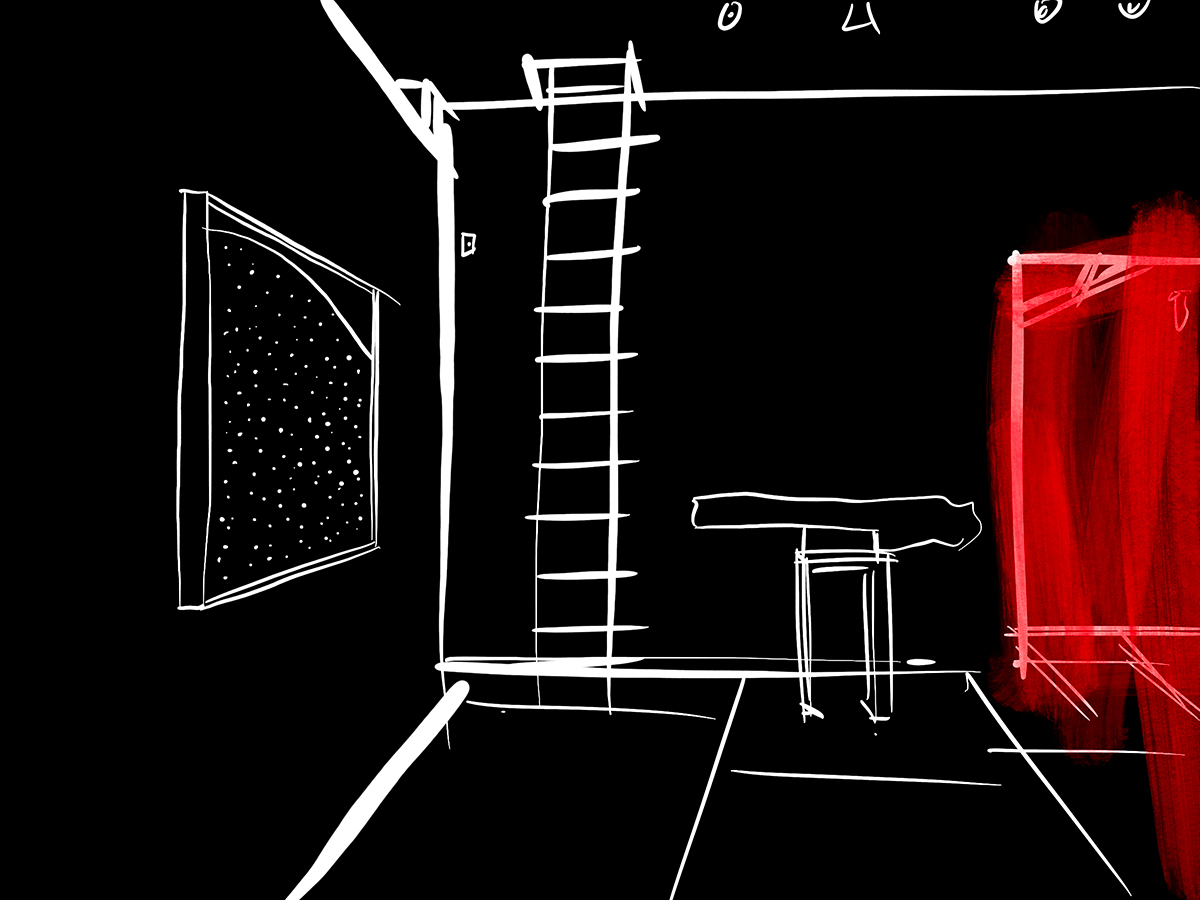Welcome to LAB
The research studio of STABILE Architects
Liminal Space

Richard Serra – Hitchcock, and Isamu Noguchi – Galvanized Steel Sculptures exhibition currently on view at Gemini G.E.L. (through November 2024, Los Angeles, CA) is a feast for the eye. For several reasons, and not all apparent.
The show unfolds like clockwork through Frank Gehry architecture. Climbing the slightly off-axis staircase with its rhythmic shadows—cast by the exposed wood structure—seems to prime the viewer for what would soon unfold upstairs.
The second-floor landing is very much the vestibule of a shrine where light and shadow are praised by the works of Serra and Noguchi.
Both artists are concerned with space. Through drawings—Serra— and steel sculptures—Noguchi—a very specific space is explored: the liminal space, the space at the edge.
Reality is observed while looking with one eye closed. Like we playfully do when we reduce the subject to its 2-dimensional essence reading its volume as a cut-out, as the shadow cast by its body.
The works on view are about cutting. The subject embodies an edge, an absolute edge for Serra, that helps us better interpret reality. As philosopher D. G. Leahy articulates in the Thinking Now Occurring: where is the point of contact with the world within the world? The meshing takes place at the edge: in the case of the universe as a whole, it takes place at the absolute edge, the infinitely shared edge.
Noguchi is concerned with the edge of nature closer to us at a micro-scale, so to speak. A plasma torch cuts through the sheet steel evoking the organic curves of plants, animals, rocks, and sky. On the other hand, Serra simulates the cut on handmade Japanese paper using the stark contrast between the white background and the black fields of heavily textured oil stick. Serra enacts the cosmic edge, the macro edge, the infinitely shared edge.
In Noguchi’s galvanized steel works, light is reflected or blocked—in Sparrow it is only in the shadow cast by the sculpture that we intercept the bird silhouette—while, in Serra’s gravitational fields on washi paper, light is absorbed by the thick solid-lava-like texture vaporizing the vision in pure geometry. Both reach lyrical levels turning artmaking into an essentially spiritual practice. The works are pagan icons, secular prayers, ex-votos, offerings to the black-hole-sun of the surreal landscape sung by Chris Cornell of Soundgarden.
As mentioned earlier, a staircase between the main buildings leads to the upper gallery. The staircase is off-axis. It aligns with the micro-shift of an imaginary film still. It may be perceived out of context and surprisingly placed at the edge of the structure. It gives a sense of temporariness. We could be indoors or outdoors. Climbing it—or standing underneath it—we are pleasantly disoriented as if we were part of a situationist Dérive.
The space of the courtyard, between the two buildings, is at once compressed and expanded by the misaligned stairs. But it is by this very micro-shift of its axis and unexpected placement, that Gehry can generate a successful liminal space. In fact, the courtyard is in a transitional state, it is in-flux. It is also an absolute edge and an interstice. The architectural volume open to the sky is a threshold and a surprise—a place between what we are and what we choose to become.
The gallery courtyard interstice is the equivalent of Noguchi-Serra’s
cuts. It is by introducing discontinuity, and by deliberately standing on that
liminal threshold, that we truly embrace the otherness letting creative
thinking occur now.
GET IN TOUCH
Contact info
Address
6646 Hollywood Blvd, Hollywood, CA 90028
Email Us
info@stabileinc.com
Call / text Us
323-241-9512
